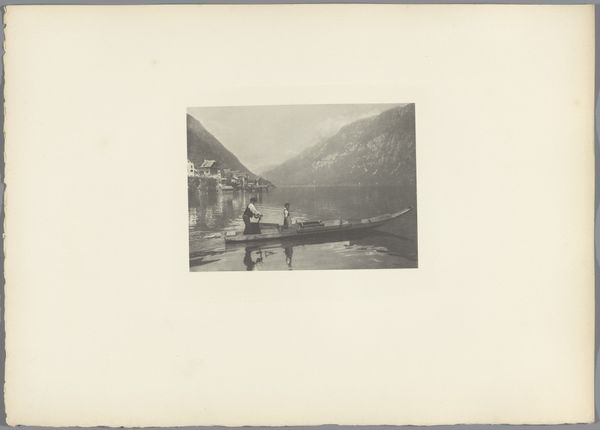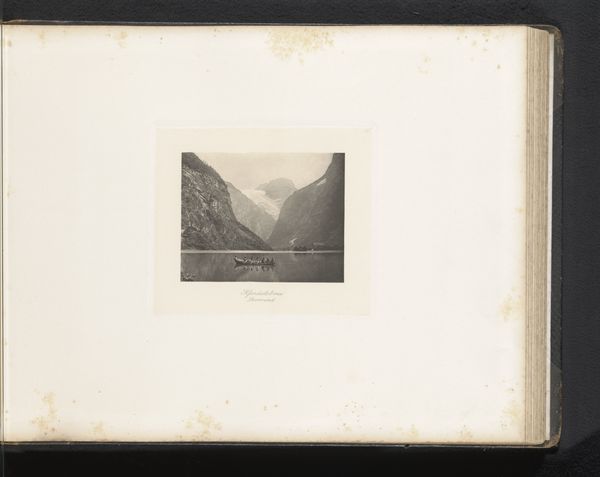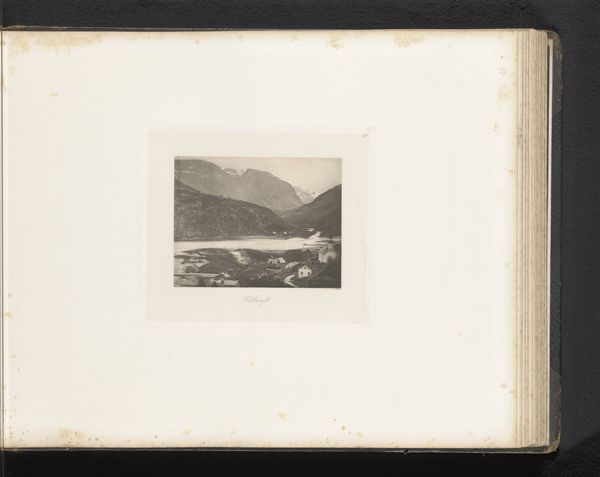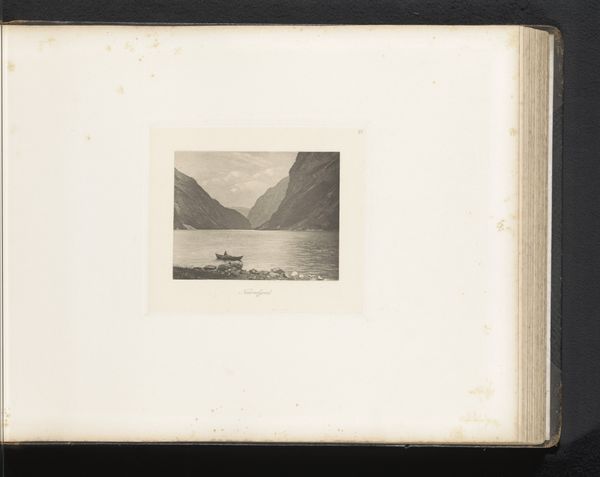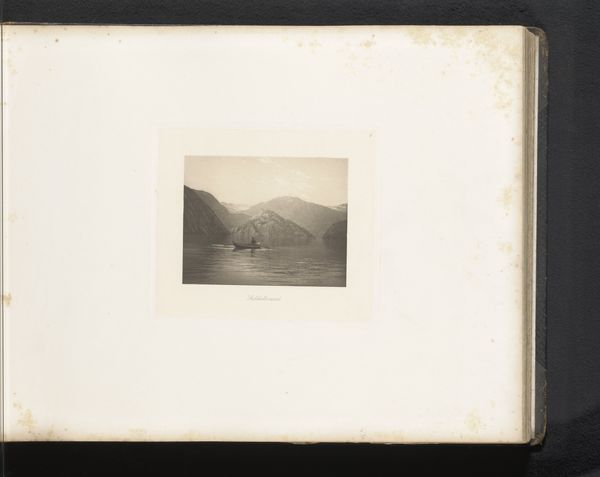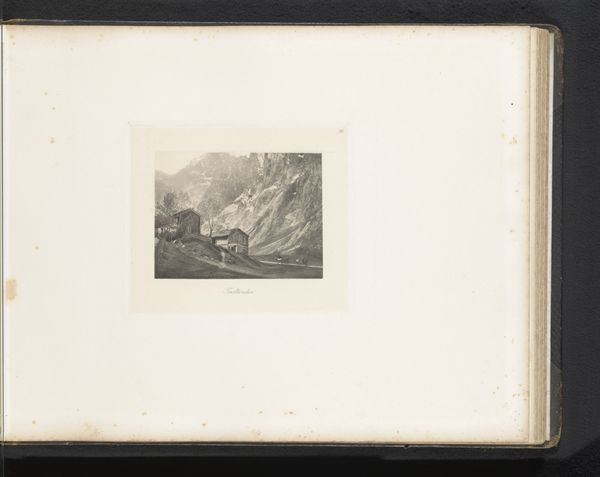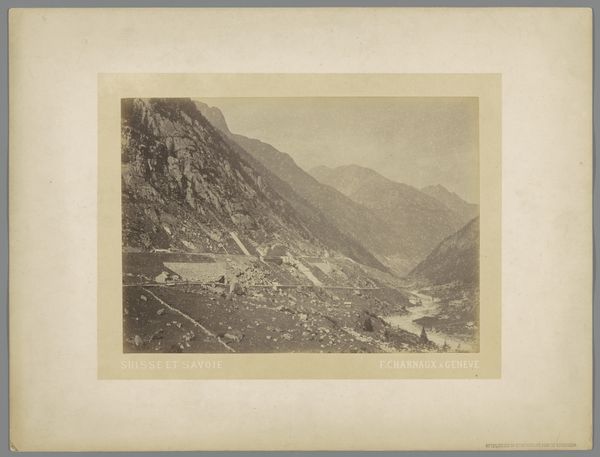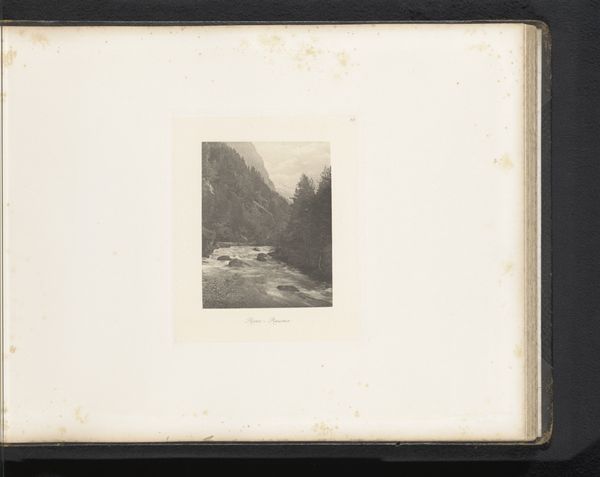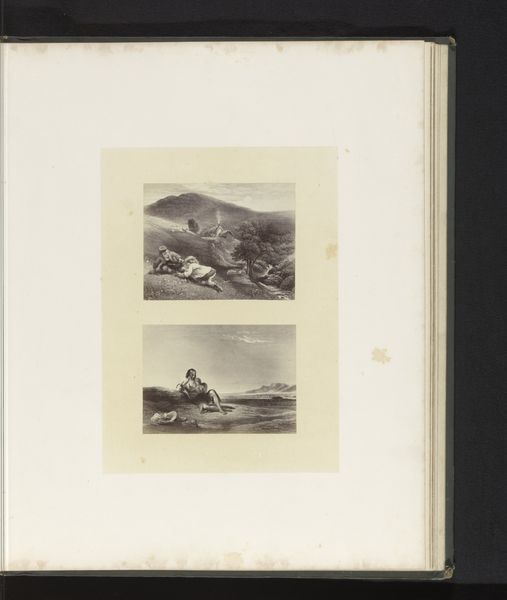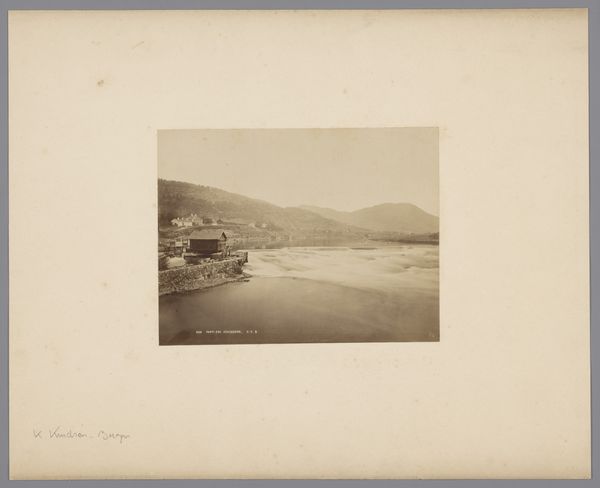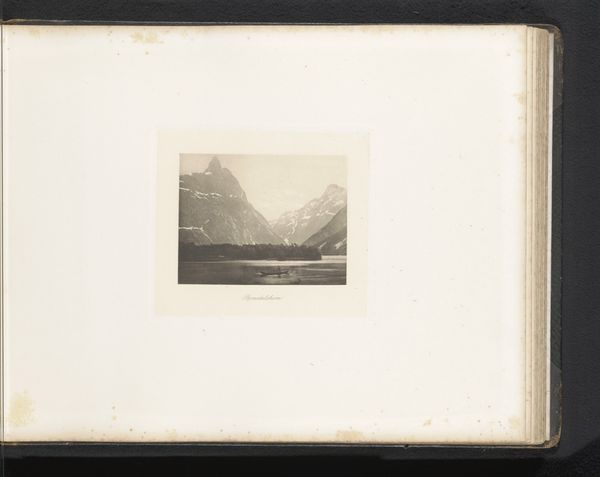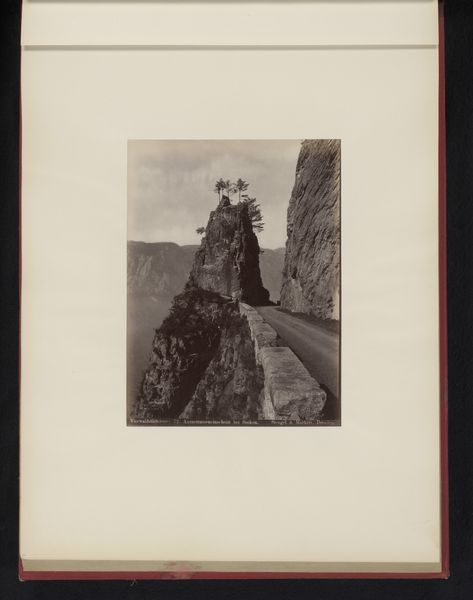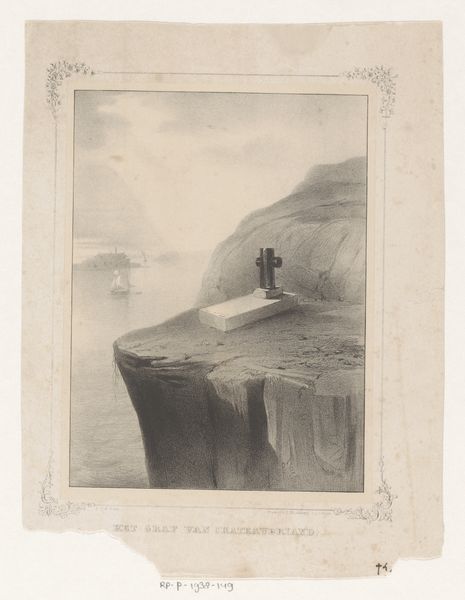
Vrouwen in een roeiboot in de Hardangerfjord, Noorwegen 1860 - 1880
0:00
0:00
jamesvalentine
Rijksmuseum
Dimensions: height 152 mm, width 213 mm, height 348 mm, width 453 mm
Copyright: Rijks Museum: Open Domain
Curator: Look at this evocative scene captured by James Valentine, "Vrouwen in een roeiboot in de Hardangerfjord, Noorwegen," taken sometime between 1860 and 1880. It's a gelatin silver print. What strikes you initially? Editor: A serene melancholia, perhaps? It’s incredibly still—the water like glass reflecting the formidable mountain face in the background. The sepia tones add this gorgeous, dreamlike distance, as if peering into a past both familiar and irretrievable. Curator: Valentine’s choice of the gelatin silver process is interesting here. Mass production. It allowed for sharp detail while still giving this kind of hazy atmosphere. Note the traditional dress; a signal of local identity amidst increasing industrialisation. Editor: They look almost theatrical, don't they? Staged within nature, perhaps to represent or embody an idealized, very specific womanhood. A Norwegian dream floating across this cold water in a simple wooden boat, toward an uncertain future! I imagine the clack of the wood planks beneath their feet... Curator: Right, but consider that the staging could serve a documentary purpose, framing both leisure and labour against a backdrop being transformed by tourism. It highlights the marketing of a cultural identity packaged and sold alongside access to new technologies and experiences for outsiders. This labor extended to the subject—sitting for prolonged exposure times must have been a task of its own, almost factory-like at points! Editor: True, the pose suggests a held breath, a static interruption of a much broader performance. Yet the softness…It tugs me back toward Romanticism and genre painting rather than stark documentation. Makes you think about what they were thinking then, doesn’t it? It’s lovely to let your thoughts drift on water this old. Curator: Exactly—It serves as an archive both recording a moment and participating within its production, shaping how it might be remembered. It asks us to think how it was made—how many prints like this could there be out there now? How many laborers handled them, consumed by their work? Editor: Such fascinating tension—beauty carefully built from a multitude of labour processes, a haunting scene still so gently felt…
Comments
No comments
Be the first to comment and join the conversation on the ultimate creative platform.
